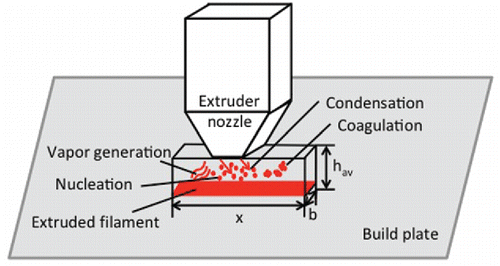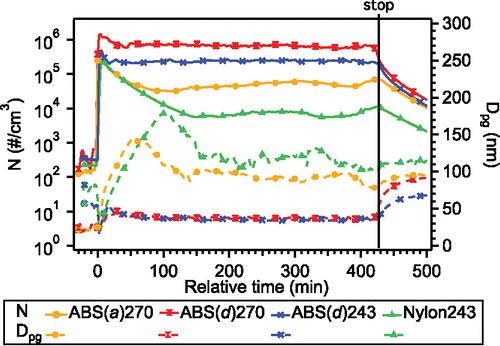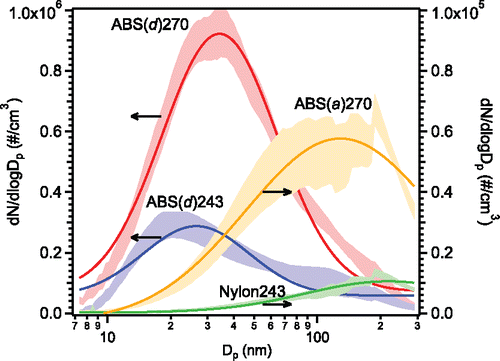Figures & data
Table 1. Specific print conditions for the selected tests.
Figure 1. Schematic of the control volume located just below the 3D printer extrusion nozzle and aerosol dynamic processes that are modeled within the control volume. The variable x is the length of the control volume defined by the effective length of extruded filament; hav is the height of the control volume; b is the width of the control volume, which is set at 1 mm.

Figure 2. Total particle number concentrations (N) and geometric mean diameters (Dpg) measured in chamber experiments. Time zero on the x-axis indicates the beginning of the print run. The vertical line indicates the time when printing stopped. The notation is filament material (filament brand) extruder temperature.

Figure 3. Average particle size distributions at steady state, the shaded areas are the mean values with one standard deviation; the lines are the corresponding lognormal fittings. The notation is filament material (filament brand) extruder temperature. ABS(d)270 and ABS(d)243 refer to the left y-axis, the rests refer to the right y-axis.

Table 2. Measured steady state conditions and model simulation results.
Figure 4. Sensitivity analysis on how particle concentrations and properties of the lognormal distribution depend on condensing vapor properties. The plots show the simulated steady state particle concentrations (N), geometric mean diameters (Dpg) and geometric standard deviations (σg) of lognormal size distributions as a function of (a) saturation vapor pressure (Ps), (b) vapor condensation factor (f) and (c) vapor generation rate (R). For every parameter evaluated, the controlled conditions are shown below the graphs.

Figure 5. Observed steady state particle size characteristics (N, Dpg, σg in upper panel) and model simulated condensing vapor properties (Ps, R, f in lower panel), grouped by 3 sets of comparisons. (a) compares extrusion temperature of the same filament; (b) compares ABS filament brands run at the same condition; (c) compares ABS and nylon materials run at the same condition.

